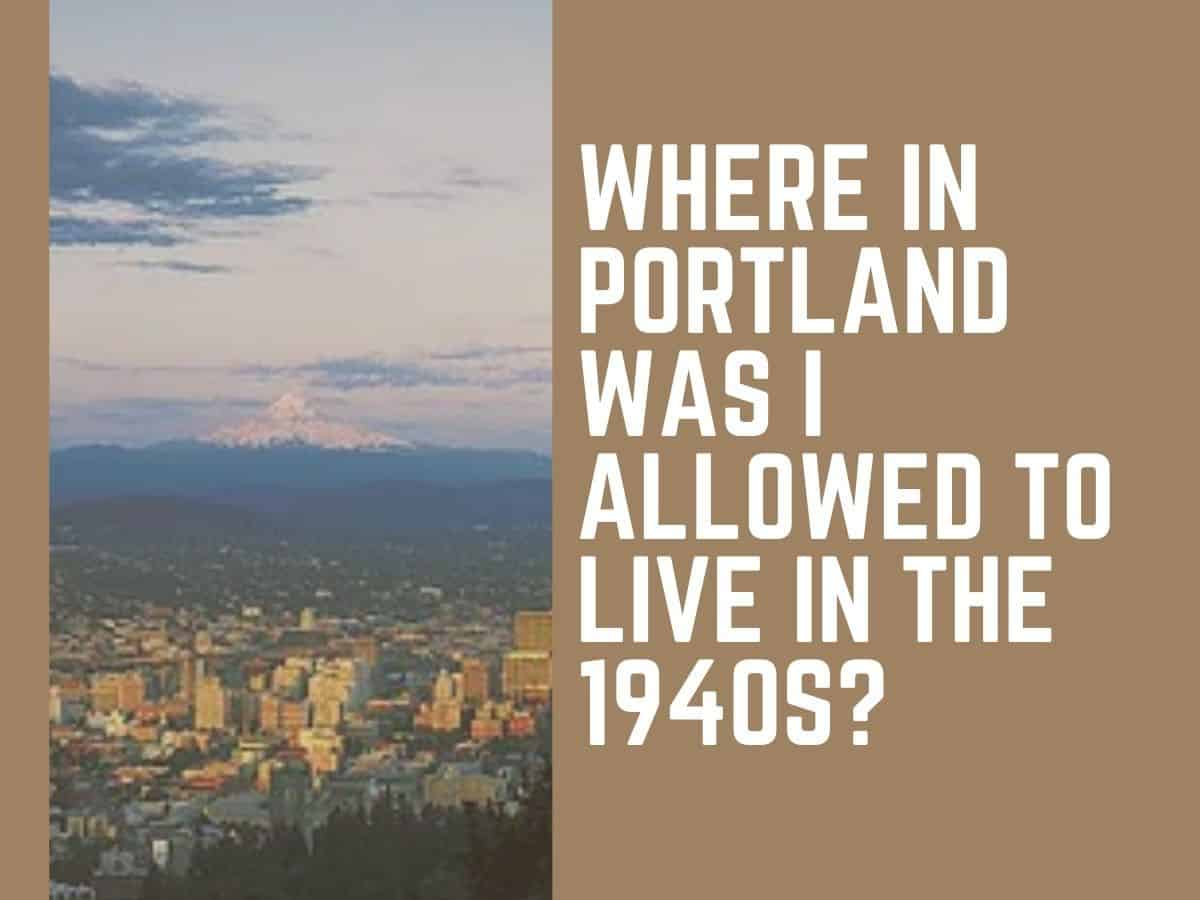Oregon, a beautiful state and a wonderful home, is plagued with a racist past that seems to be rarely acknowledged. Originally founded as a free state was only free because it did not allow any Black people to live there at all. Other ethnic groups such as Asian people were not all that welcome either. In 1926, the state repealed its Exclusion Law which then allowed Blacks to live in Oregon. However, White Oregonians did not want to live in mixed neighborhoods. Then, came in redlining. On the map, it shows that blue and green areas are the best places to live while the yellow and red are not.
So, let’s go back in time to 1940 where, an Asian American woman, I was allowed to somehow work on the railroads. Of course, with 2 kids, I would like to live in a good area. Giving the kids a good home with a good school was the whole point of me immigrating to the U.S. It is interesting that the green areas on the map are far from my workplace. I guess the next best thing could be this Irvington neighborhood.

Let’s see what the security map says about pros and cons:
Pro:
- Schools
- Churches
- Recreational Areas
- Shopping centers
- Near city center
Cons:
- Proximity to Lower Albina and the Alberta Districts. I think that’s where other Asians and Black Americans live. Why is this listed as a con?
I found a house for sale on N.E. 22nd Ave… The previous owners were tailors and stock-keepers. The neighborhood seems consistent with businessmen, white-collar workers. I’m not sure I’ll be able to afford this.
I think I found another home in the lower Albina (outlined in bolded lines).

Here are some Pros and Cons about Lower Albina from 1940:
Pro:
- Convenience to the city center
- Schools
- Churches
- Recreational areas
- Trading centers
Cons:
- Extremely heterogeneous population
- Dilapidated improvements
- Encroachment of business
I wonder why these cons seem so deterring for me. I guess the home is within my price range and my ability to get a loan. The previous owners held jobs such as housekeeper and cook. Though I wish I could live in the Irvington area, I guess I’ll settle for the Lower Albina area.
Back in the present-day: Based on the data from the security maps, it is easy to understand that the areas in the blue area in nicer areas, dominantly White communities. In the communities where there are people of color, the communities would progressively be less as valuable. Using the pros and cons of information from the security maps can show a better comparison of how the HOLC viewed the different parts of Portland. In the end, as an Asian-American. I would have a hard time finding a home in a good area where I would want, though I would likely want to be close to my ethnic community.


Hi Angela,
I thought you took this post in a really cool direction! I think Oregon can be so interesting to look at because Portland is often painted as a very welcoming city for diverse residents, but in reality, Oregon has such a blatantly racist history. It is clear that the redlining in Portland made it incredibly hard for POC to find a good place to live, as you mentioned. And then today we are facing a whole different issue with gentrification. Overall, I thought this was really well done and still super relevant.
Here’s a good article on the subject “Oregon Was Founded As a Racist Utopia“
An impressive post. I like your creative approach to telling an important story. You skillfully weave a personal narrative into the historical data. And most importantly you shed light on Portland’s racist past. Truly sad, when you realize how Asians were exploited as cheap labor. Then cut off from immigration to US.
When I was first exploring the maps, I was surprised Ladd’s Addition was a “definitely declining – yellow area.” (I like to bike through there – beautiful homes and layout). It said “Infiltration of undesirable racial elements.” “It is now a typical declining area. There are now 9 or 10 better class Chinese families residents of the areas, and class of inhabitants is slowly declining.”
This was a great idea, and a really interesting way of looking at how to view the HOLC data. Oregon has a long way to go…so does the rest of the US, frankly…
Your lesson is really-well made. I’m wondering how it could be translated to younger students. I like the idea splitting the class into groups and giving them each a SES and racial background? Just a thought.
Hi Angela,
I love your post about what it means for an Asian-American living in Portland. Back then neighborhoods did not want to have a cultural mix and would rather surround themselves with people that are like them. Dare I say, things have changed. Today, a lot of communities are getting racially profiled based on the majority of races that live there.